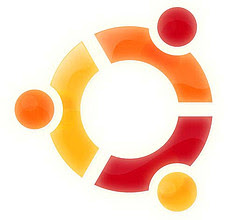Anyone who follows technology is familiar with Moore's Law and its many variations, and has come to expect the price of computing power to halve every 18 months. But many people don't see the true long-term impact of this beyond the need to upgrade their computer every three or four years. To not internalize this more deeply is to miss investment opportunities, grossly mispredict the future, and be utterly unprepared for massive, sweeping changes to human society.
Today, we will introduce another layer to the concept of Moore's Law-type exponential improvement. Consider that on top of the 18-month doubling times of both computational power and storage capacity (an annual improvement rate of 59%), both of these industries have grown by an average of approximately 15% a year for the last fifty years. Individual years have ranged between +30% and -12%, but let's say these industries have grown large enough that their growth rate slows down to an average of 12% a year for the next couple of decades.
So, we can crudely conclude that a dollar gets 59% more power each year, and 12% more dollars are absorbed by such exponentially growing technology each year. If we combine the two growth rates to estimate the rate of technology diffusion simultaneously with exponential improvement, we get (1.59)(1.12) = 1.78.
The Impact of Computing grows at a screaming rate of 78% a year.
Sure, this is a very imperfect method of measuring technology diffusion, but many visible examples of this surging wave present themselves. Consider the most popular television shows of the 1970s, such as The Brady Bunch or The Jeffersons, where the characters had virtually all the household furnishings and electrical appliances that are common today, except for anything with computational capacity. Yet, economic growth has averaged 3.5% a year since that time, nearly doubling the standard of living in the United States since 1970. It is obvious what has changed during this period, to induce the economic gains.
In the 1970s, there was virtually no household product with a semiconductor component. Even digital calculators were not affordable to the average household until very late in the decade.
In the 1980s, many people bought basic game consoles like the Atari 2600, had digital calculators, and purchased their first VCR, but only a fraction of the VCR's internals, maybe 20%, comprised of exponentially deflating semiconductors, so VCR prices did not drop that much per year.
In the early 1990s, many people began to have home PCs. For the first time, a major, essential home device was pegged to the curve of 18-month halving in cost per unit of power.
In the late 1990s, the PC was joined by the Internet connection and the DVD player, bringing the number of household devices on the Moore's Law-type curve to three.
Today, many homes also have a wireless router, a cellular phone, an iPod, a flat-panel TV, a digital camera, and a couple more PCs. In 2006, a typical home may have as many as 8 or 9 devices which are expected to have descendants that are twice as powerful for the same price, in just the next 12 to 24 months.
To summarize, the number of devices in an average home that are on this curve, by decade :
1960s and earlier : 0
1970s : 0
1980s : 1-2
1990s : 3-4
2000s : 6-12
If this doesn't persuade people of the exponentially accelerating penetration of information technology, then nothing can.
One extraordinary product provides a useful example, the iPod :
First Generation iPod, released October 2001, 5 GB capacity for $399
Fifth Generation iPod, released October 2005, 60 GB capacity for $399, or 12X more capacity in four years, for the same price.
Total iPods sold in 2002 : 381,000
Total iPods sold in 2005 : 22,497,000, or 59 times more than 2002.
12X the capacity, yet 59X the units, so (12 x 59) = 708 times the impact in just three years. The rate of iPod sales growth will moderate, of course, but another product will simply take up the baton, and have a similar growth in impact.
Now, we have a trend to project into the near future. It is a safe prediction that by 2015, the average home will contain 25-30 such computationally advanced devices, including sophisticated safety and navigation systems in cars, multiple thin HDTVs greater than 60 inches wide diagonally, networked storage that can house over 1000 HD movies in a tiny volume, virtual-reality ready goggles and gloves for advanced gaming, microchips and sensors embedded into several articles of clothing, and a few robots to perform simple household chores.
Not only does Moore's Law ensure that these devices are over 100 times more advanced than their predecessors today, but there are many more of them in number. This is the true vision of the Impact of Computing, and the shocking, accelerating pace at which our world is being reshaped.
I will expand on this topic greatly in the near future. In the meantime, some food for thought :
Visualizing Moore's Law is easy when viewing the history of video games.
The Law of Accelerating Returns is the most important thing a person could read.
How semiconductors are becoming a larger share of the total economy.
Economic Growth is Exponential and Accelerating, primarily due to information technology becoming all-encompassing.
from The Futurist …
Njoy …






